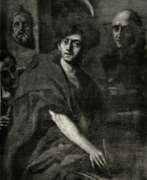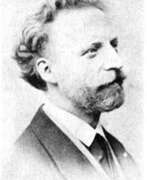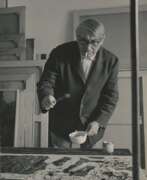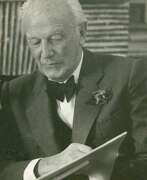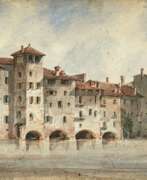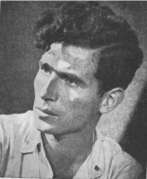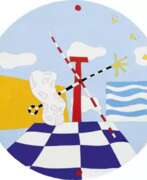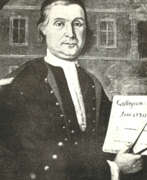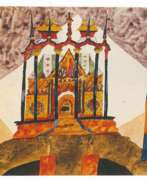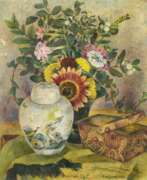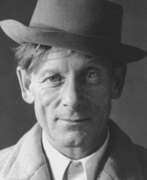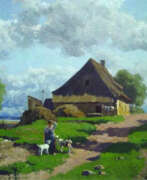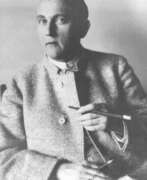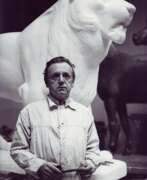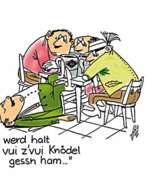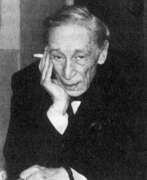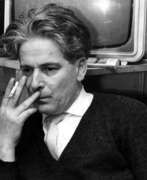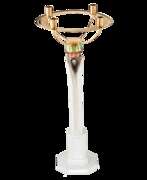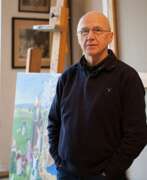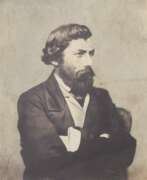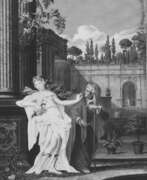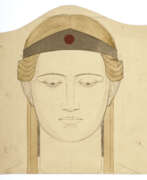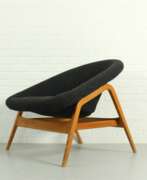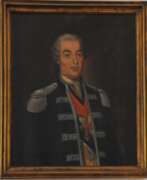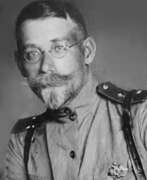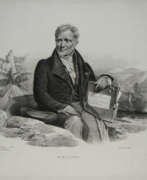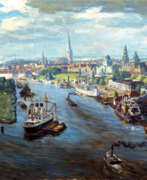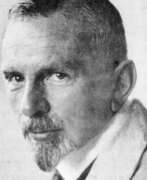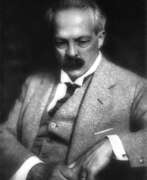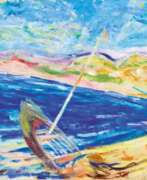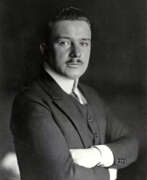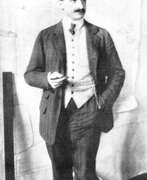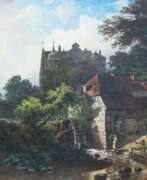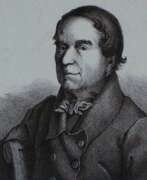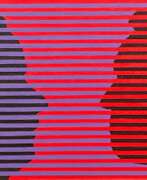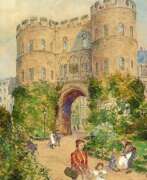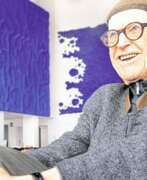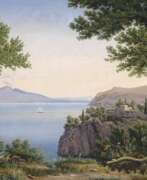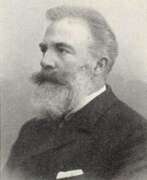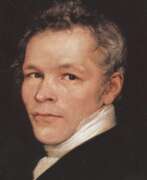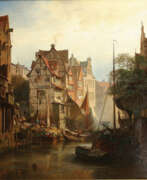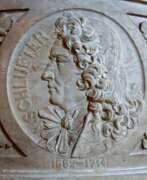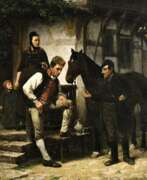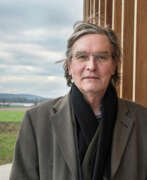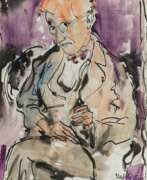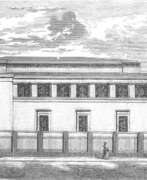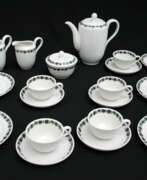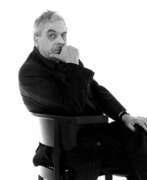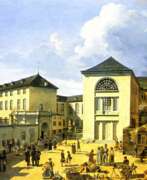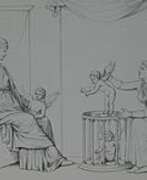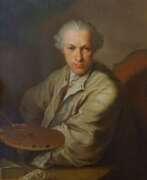Architects Germany
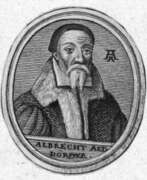

Albrecht Altdorfer, a notable German painter, engraver, and architect of the Renaissance era, was especially recognized for his contributions to landscape painting. Born around 1480, Altdorfer was a pivotal figure in the Danube School, distinguishing himself with his integration of natural landscapes into biblical and historical narratives.
His works are celebrated for their detailed and expressive landscapes, often serving as backdrops to religious and historical scenes. A hallmark of his style is the emotional intensity and vivid use of colors, which border on expressionistic in his religious scenes, particularly seen in works like the Sebastian Altar in St. Florian's Priory. Altdorfer's painting, "The Battle of Alexander at Issus," stands out for its epic portrayal of Alexander the Great's victory, showcasing Altdorfer's talent in blending historical narrative with dramatic landscape settings.
In addition to his artistic pursuits, Altdorfer was actively involved in the civic life of Regensburg, serving as its mayor in 1528. His legacy in the art world is profound, with his innovative approach to landscape painting influencing the course of European art.
For those interested in delving deeper into Albrecht Altdorfer's oeuvre or staying informed about related exhibitions and auction events, signing up for updates can provide valuable insights and opportunities.
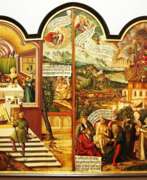

Erhard Altdorfer, a German Early Renaissance printmaker, painter, and architect, is renowned for his contributions to the arts during the 16th century. Born around 1480, Altdorfer's career flourished in Schwerin, where he served as a court painter and architect for the Dukes of Mecklenburg from 1512 until his death in 1561. His journey into the arts likely began under the guidance of his older brother, Albrecht Altdorfer, a prominent figure in the same era.
Altdorfer's early work possibly included collaboration with his brother in Regensburg. By 1512, his talents led him to Schwerin, marking the start of a significant phase in his career. His oeuvre includes various forms, from engravings and woodcuts to paintings and architectural designs. Notable among his works are contributions to the Lübeck Bible, showcasing his skill in woodcut illustrations. Despite the limited number of signed works, his contributions to printmaking and painting hold a place in the history of German Renaissance art. His works, reflecting a blend of influences, including from Lucas Cranach the Elder and Jacopo de' Barbari, demonstrate a unique interpretation of the Renaissance style.
For collectors and experts in art and antiques, understanding Altdorfer's role within the context of the Early Renaissance and his contributions, especially in printmaking and painting, offers a nuanced appreciation of this period. His works, though not as prolifically signed as those of some contemporaries, remain significant for their historical and artistic value. To stay updated on new discoveries or auction events related to Erhard Altdorfer's works, consider signing up for updates to deepen your knowledge and collection of Renaissance art.
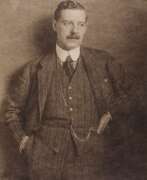

Peter Behrens was a seminal figure in modern design and architecture, heralded as the first industrial designer and a pioneer in modernist architecture. Born in Hamburg, Germany, Behrens's influence spanned across various domains, including architecture, industrial design, and graphic design. His holistic design approach was revolutionary, encompassing everything from architectural projects to corporate identities.
Behrens's association with AEG (Allgemeine Elektrizitäts-Gesellschaft) marked a significant chapter in his career. Hired as an artistic consultant in 1907, he crafted a comprehensive corporate identity for AEG, including the iconic AEG Turbine Factory (1909), a hallmark of industrial classicism and modernism. This work is celebrated for its pioneering approach to industrial architecture and design, integrating form and function with unprecedented clarity and coherence.
His architectural ventures displayed a versatility and an evolution of style, from the monumental, stripped classical form seen in the German Embassy in St Petersburg (1912) and the Administration Building for Continental AG in Hannover (1912-1914), to the expressive Brick Expressionism of the Technical Administration Building of Hoechst AG in Frankfurt (1920-1924). Behrens's work in the 1920s, including the design for the 'New Ways' house in Northampton, UK, and contributions to the Weissenhof Estate in Stuttgart, underscored his shift towards New Objectivity and modernist principles.
Moreover, Behrens's educational contributions were profound, with his teaching stints at the Academy of Fine Arts Vienna influencing a new generation of architects, including luminaries such as Ludwig Mies van der Rohe, Le Corbusier, and Walter Gropius, who would themselves go on to define the course of 20th-century architecture.
Behrens's legacy is a testament to the transformative power of design, illustrating how integrated and forward-thinking approaches can redefine our built environment and the objects we use daily. His work remains an essential study for collectors, experts in art and antiques, and anyone interested in the evolution of modern design and architecture.
For updates on exhibitions and auctions featuring Peter Behrens's work, sign up for our newsletter. Stay informed about new discoveries, sales, and events related to this pivotal figure in modern architecture and design.
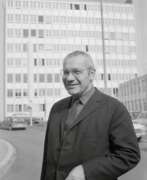

Max Bill, a Swiss artist, architect, painter, typeface designer, industrial designer, and graphic designer, emerged as a key figure in 20th-century art and design. Born in Winterthur, Switzerland, in 1908, Bill's education at the Bauhaus under luminaries like Wassily Kandinsky, Paul Klee, and Oskar Schlemmer profoundly influenced his multidisciplinary approach. His work spans from graphic design, where he was instrumental in shaping Swiss design from the 1950s, to product design with iconic creations like the Ulmer Hocker, a versatile stool designed in 1954.
Bill's contributions to concrete art and his role in founding the Ulm School of Design alongside Inge Aicher-Scholl and Otl Aicher in 1953, mark him as a pioneer who blurred the lines between art, design, and architecture. His theoretical writings and teaching at the Ulm School further underscored his commitment to integrating art with science, shaping a generation of designers and artists.
Noteworthy among his architectural works are his own house and studio built in Zurich-Höngg in the early 1930s and a series of public sculptures that challenge perceptions and engage public spaces in innovative ways. His legacy also includes influential roles in politics, contributions to the field of education, and the establishment of foundations to preserve his work and ideals.
Bill's extensive oeuvre, which also includes timepieces designed for Junghans and a multitude of sculptures, demonstrates his belief in the unity of form and function and the possibility of art to embody the principles of the new physics of the 20th century. His works are not only held in high regard for their aesthetic and functional qualities but also for their ability to convey complex theoretical ideas in tangible forms.
For collectors and experts in art and antiques, Max Bill remains a figure of immense importance, whose works continue to inspire and influence contemporary design and art practices. Sign up for updates related to Max Bill to stay informed about new product sales and auction events showcasing his remarkable contributions to modern art and design.
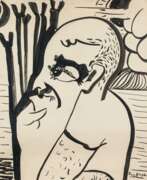

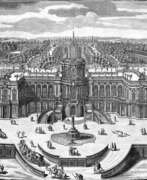

Paul Decker the Elder was a German architect and engraver.
He created a series of copperplate engravings depicting designs for ideal princely and royal architecture, including palaces, fountain cascades, and gardens. Decker's work was published in three volumes (1711-1716) under the title Fürstlicher Baumeister oder Architectura Civilis.
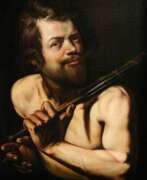

Martin Hermann Faber was a German painter, architect, and cartographer. He was also a copper engraver in Rome. He lived and worked most of his life in Emden, where he still remains one of the most respected and significant artistic personalities of the city.
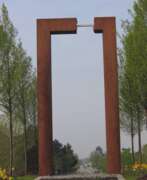

Kurt Fleckenstein is a German artist/sculptor associated with land art, minimal art and installation art. Fleckenstein was born in Heddesheim near Mannheim in Baden-Württemberg. His earlier career in landscape architecture, regional planning and horticultural art led to the establishment of several architectural studios in Germany, Austria and Poland. Since 2003 he has worked as a freelance artist with a focus on spatial objects and installations in exhibition centres and public open space. His provocative art form is designed to charm, irritate and challenge the viewer to question and compare “idealism with realism” on major social, cultural, economic and environmental issues. Fleckenstein now divides his home and work life between Mannheim, Germany and Wroclaw, Poland.
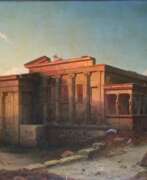

Hermann Johann Ernst Gemmel was a German architect and artist of the mid-nineteenth century. He is known as an architectural painter and educator.
Hermann Gemmel studied painting at the Berlin Academy of Fine Arts and began to specialize in architectural painting, depicting mainly architectural sites in East Prussia and Italy. These paintings of his are of great historical value today. In 1855 he became professor of perspective and architecture at the Königsberg Academy of Arts.
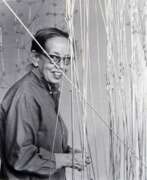

Gertrud Goldschmidt, full name Gertrud Louise Goldschmidt, also known by her pen name Gego, is a Venezuelan painter, architect and sculptor of German descent.
She graduated from the University of Stuttgart with a degree in engineering and architecture, and emigrated to Venezuela with the outbreak of World War II, settling in Caracas. Gertrud Goldschmidt was engaged in design and architectural commissions. And she began her artistic career in the 1950s, developing her own style of geometric abstraction, which became a symbol of artistic modernity in Venezuela.
Gego then began to create sculptures and wire mesh constructions, and was also active in kinetic art. In 1969, the Museum of Fine Arts in Caracas exhibited her three-dimensional installation consisting of an extensive modular wire mesh that unfolds in the gallery space through the floor, walls and ceiling. Goldschmidt is best known for her geometric and kinetic sculptures made in the 1960s and 1970s.
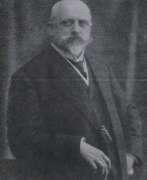

Theodor Groll was a German genre painter, landscape and architectural painter.
Theodor Groll was famous for his beautifully detailed architectural drawings. Besides Oswald Achenbach and Albert Flamm, he belongs to the "Italian painters" of the Düsseldorf School.
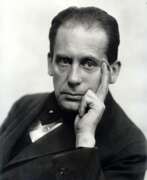

Walter Adolph Georg Gropius was a German-American architect, recognized as one of the founding masters of modern architecture and the pioneer behind the Bauhaus School. Born in Berlin, Gropius was immersed in an environment that nurtured his architectural interests from an early age, thanks to his well-connected family and architect great-uncle, Martin Gropius. His education took him from Munich to Berlin, where he honed his architectural vision, eventually joining the office of Peter Behrens, where he worked alongside future luminaries such as Ludwig Mies van der Rohe and Le Corbusier.
Gropius's early career saw him co-found an architectural practice with Adolf Meyer, with whom he created the Fagus Factory, a landmark in modern industrial architecture that emphasized the form follows function principle and showcased modernist design through its glass curtain walls. This period was marked by his contributions to the Deutscher Werkbund, advocating for the fusion of art with industrial design, and his leadership at the Bauhaus School, where he fostered an interdisciplinary approach to art and design education.
His relocation to the United States led to significant projects, such as the Harvard Graduate Center and the Josephine M. Hagerty House, marking his influence on American architecture and the broader acceptance of International Modernism. Gropius's legacy is not only in his buildings but also in his philosophy of integrating art, design, and architecture, a vision that continues to inspire architects worldwide.
For those interested in exploring the works and impact of Walter Gropius further, visiting exhibitions at museums or galleries that feature his work and the Bauhaus movement can offer deeper insights. Collectors and experts in art and antiques might find his approach to design and architecture particularly enlightening, given its enduring influence on modern and contemporary art.
If you're captivated by the innovation and ideas of Walter Gropius and wish to stay informed about sales, auctions, or exhibitions related to his work, consider signing up for updates. This subscription will ensure you're always in the know about events and opportunities related to this pioneering figure in modern architecture.
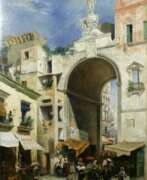

Veronika Maria Herwegen-Manini was a German painter and architect, the daughter of the painter Peter Herwegen (1814-1893). She specialized in architectural painting and is known for her numerous paintings of views of Rome, Venice, and Naples.
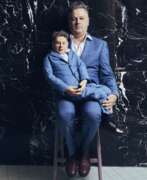

Christian Heuchel is a German artist, architect, urban planner and professor.
He studied architecture in Karlsruhe and architecture at the Düsseldorf Academy of Art, where he has taught since 2000. Heuchel has been with the O&O Baukunst office since 2000, took over the Cologne office in 2006 and has been a partner of O&O Baukunst Berlin/Cologne/Vienna since 2011.
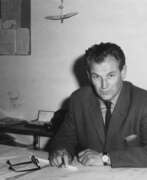

Herbert Hirche was a German architect, interior and furniture designer and educator.
Hirche studied at the famous Bauhaus school in Dessau and Berlin, where Ludwig Mies van der Rohe and Wassily Kandinsky taught. Trained as a carpenter, he first worked for Mies, Egon Eiermann and Hans Scharun before being appointed professor of applied art at the University of Applied Arts in Berlin-Weißensee in 1948. Four years later he became professor of interior and furniture design at the Stuttgart State Academy of Fine Arts. During his years of teaching, Hirche has educated generations of designers.
In addition to teaching, Hirche designed many homes and interiors. He designed furniture for Walter Knoll, Wilkhahn, Holzäpfel and Wilde+Spieth, as well as several projects for Braun, including the HM5-7 music cabinet and the HF1 television set. Hirche's simple and elegant models were exhibited at various Milan Triennales and the 1958 World Exhibition in Brussels. His work had a great influence on the development of product and interior design in Germany and the world.
Hirche was one of the founders of the Deutscher Werkbund (German Association of Craftsmen) in Berlin, was president of the Verband Deutscher Industrie-Designer (Society of Industrial Designers) for ten years, and was a member of the Rat für Formgebung (German Design Council).


Bernhard Hoetger is a German painter, sculptor, graphic artist and architect. He studied at the Dusseldorf Academy of Art.
In 1937, as part of the Nazi "Degenerate Art" campaign, many works by Bernhard Hoetger were destroyed.
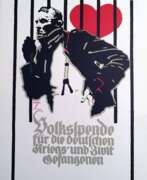



Peter Keler is a German designer, graphic artist and architect.
Keler began his training at the Kiel School of Applied Arts and then studied at the Bauhaus in Weimar under Oskar Schlemmer and Wassily Kandinsky. He also designed the study of Walter Gropius, then director of the Bauhaus. In 1923, at the first Bauhaus exhibition, Keler presented a baby cradle of his own design, which later became a symbol of the Bauhaus: its design is based on Wassily Kandinsky's synesthetic theory of color and form and consists of a circle, triangle and square. In the same year, the artist became a member of the active Bauhaus group KURI; the movement as a whole was characterized by functionality and conformity to mass production. Then in Weimar he founded his own studio for painting, advertising posters and design.
In 1937 the Nazi Party in Germany banned Keler from exhibiting, but he worked as a freelance architect in Berlin and as a designer for the film company Tobis. At the end of the war, Keler accepted an invitation to the newly founded Weimar School of Architecture and Visual Arts, modeled after the Bauhaus, where he taught drawing, design, and architecture for many years.
Keler's work is still popular and sought after today due to its attractive simplicity. Interior objects designed by Keler, such as chairs and cradles, have been so successful that they are still sold by the German company Tecta.
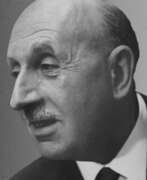

Wassili Luckhardt was a German architect. He studied at the Technical University of Berlin (Technische Universität Berlin) and Dresden. Luckhardt and his brother Hans worked closely together for most of their lives. Both were members of the November Group (Novembergruppe), the Arbeitsrat für Kunst, the Glass Chain and, from 1926, the progressive architecture group Der Ring. The brothers shared an office with the architect Alfons Anker.
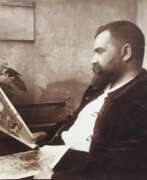

Emil Maetzel was a German architect, painter, graphic artist and sculptor.
In 1919, Maetzel was a co-founder of the Hamburg Secession, an organisation promoting modern art in northern Germany. He was also a member of the November Group, an association of expressionist artists in Berlin.


Georg Muche was a German painter, graphic artist, designer and architect.
He began his studies in Munich at the School of Painting and Drawing, continuing in Berlin in 1915. Already influenced by Wassily Kandinsky and Max Ernst, he became one of the first proponents of abstract art in Germany. In Berlin, Georg Muche began collaborating with the expressionist painter Gerwart Walden (1879-1941) and his artist group Sturm.
In 1919 Walter Gropius appointed Muche to the Bauhaus in Weimar, where he became its youngest master. He also ran a weaving workshop in Dessau. In 1926, the Metal Prototype House on the Dessau-Törten estate was built to a design developed in collaboration with the architecture student Richard Paulik. From 1939 to 1958 Georg Muche worked in Krefeld, teaching a master class in textile design at the engineering school.
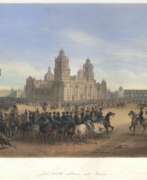

Carl Nebel was a German painter of the mid-nineteenth century. He is known as an architect, painter, graphic artist and draftsman.
Nebel became famous for his lithographs depicting various social and ethnic groups in Mexico. In 1836, he published his famous illustrated book in Paris, which included 50 lithographs of his paintings and drawings. In 1851, Nebel contributed to the publication of The War Between the United States and Mexico, which featured his battle drawings from the American-Mexican War.
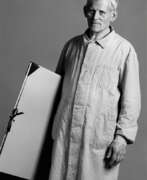

Heinrich Neuy is a German artist, furniture designer and architect. His design orientation was shaped by classical modernism. After training as a carpenter, he studied at the Bauhaus in Dessau under Josef Albers, Wassily Kandinsky and the architect Ludwig Mies van der Rohe.
Later, Heinrich Neu developed his own style, characterised by bold colour and abstract composition and dynamic form.
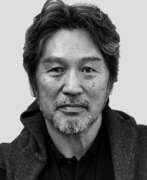

Katsuhito Nishikawa is a Japanese-German artist, sculptor, designer and architect.
After studying in Japan, he received degrees from the Academy of Fine Arts in Munich and the State Academy of Fine Arts in Düsseldorf. He currently lives and works as a visual artist and furniture designer at Insel Hombroich in Neuss, Germany. Katsuhito Nishikawa is also a visiting professor at the art universities of Hamburg (Germany) and Reims (France).
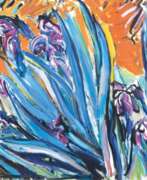

Wilhelm Ohm, full name Wilhelm Friedrich Hubert Ohm, was a German painter, draftsman, sculptor and architect.
Ohm trained in architecture and worked as a government architect and engineer, and studied sculpture and mural painting at the Prussian Academy of Fine Arts in Berlin. From 1923 to 1933 he was a member of the North German Artists' Association. In 1940 Wilhelm Ohm received a Bachelor's degree from the Technical University of Berlin on the colorful redesign of cities, through which he wanted to combine painting and architecture into a unified whole. This idea occupied him throughout his life.
Wilhelm Ohm's work of the 1920s can be stylistically categorized as New Objectivity and Surrealism. After World War II, trying to make up for lost time, he saturates his paintings with color and energy. His later works were done in a post-impressionist style. This applies to his landscapes, nature studies, floral bouquets and fruit compositions.
Wilhelm Ohm's son August Ohm, born in 1943, also became an artist.
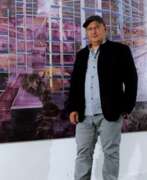

Driss Ouadahi is an architect and artist originally from Morocco who lives and works in Germany.
He studied at the Hochschule für Beaux-Arts in Algiers and at the Düsseldorf Academy of Art. The abstract architectural forms in Ouadahi's work are surprisingly a response to the buildings of real Algerian houses.


Bernhard Pankok, full name Bernhard Wilhelm Maria Pankok, was a German painter and graphic artist, designer, applied artist and architect of the Art Nouveau period.
After acquiring skills as a painter and restorer, Bernhard Pankok studied painting at the Düsseldorf Academy of Fine Arts, then in Berlin. In 1892, he began working in Munich in his own painting studio, doing illustrations for the magazines Pan and Jugend, among others. Pancock was one of the founders of the Munich Association of Art Craft Workshops.
In 1897, Pankok began designing furniture and exhibited his work at numerous exhibitions, including the landmark 1900 "Universal and International Exposition" in Paris. In the same year the art historian Konrad Lange commissioned Bernhard Pancock to design the Haus Lange for him; he worked extensively as an architect in general and designed other buildings in Stuttgart. Pankok was prolific and versatile: he designed sets for opera stages and salons for ocean liners and even the passenger cabins of zeppelins, worked as an architect, furniture designer, interior decorator, painter and graphic artist.
In 1907, he co-founded the Deutsche Werkbund. In 1901 he was invited to teach at the Royal Training and Experimental Workshop in Stuttgart; in 1913 he became its head and in that capacity merged it with the School of Arts and Crafts.
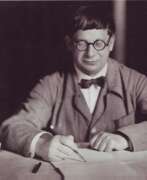

Hans Poelzig was a German architect, whose profound influence on art and culture was marked by his expressive and dramatic architectural style. His work, synonymous with the German Expressionist movement, forged a legacy of emotional and thought-provoking design that continues to resonate with art collectors and experts today.
Among Poelzig's most revered projects is the iconic I.G. Farben Building in Frankfurt, completed in 1931 and now part of Goethe University, a testament to his ability to design on a grand scale. His impact on architectural culture is also seen in the Grosses Schauspielhaus in Berlin, which stands as a paragon of expressionist architecture. This building, along with others like the Four Domes Pavilion in Wrocław, highlights Poelzig's penchant for theatrical and impactful design.
Poelzig's architectural narrative extended beyond the tangible; he conceptualized designs for the Palace of the Soviets and the League of Nations headquarters, which, despite remaining unbuilt, underscore the breadth of his vision. His academic roles, including director positions at the Breslau Art Academy and the Technical Academy in Berlin, allowed him to shape future architects and propagate his innovative design philosophy.
For those deeply invested in the realms of art and antiques, Poelzig’s creations are not merely structures but embodiments of a transformative era in architectural history. His buildings, some of which have earned the honor of being UNESCO World Heritage Sites, serve as a bridge between the past and present of architectural excellence.
To receive updates on new product sales and auction events related to Hans Poelzig, please sign up for our newsletter. This service is exclusively crafted for connoisseurs and professionals, offering timely information to enhance your collection and knowledge of historic art and architecture.
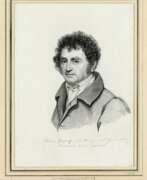

Johann Dominicus Quaglio was an Italian-born German painter of the first half of the 19th century. He is known as an architectural painter and graphic artist of the Romantic era, theater artist, lithographer and printmaker.
Quaglio traveled to various countries, which became a source of inspiration for his many works. He depicted medieval churches, castles, ruins and cities in his works. The master was one of the first to use lithography to recreate Gothic structures in graphic form. His works are historical and architectural documents of the time.
Quaglio was court painter to the Bavarian throne and a member of the Munich and Berlin Academies of Arts. He is considered by critics to have brought architectural painting back to a respectable level.
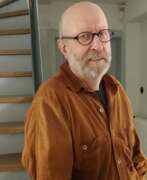

Horst Rellecke is a German painter and graphic artist, architect and sculptor, living and working in Mönesee.
After studying architecture in the United States and Italy, Rellecke earned his doctorate in engineering in 1982 with a thesis on the relationship between pop music and architecture. His work includes paintings, graphics and sculptures, and he has won numerous architectural competitions and received several awards.
Horst Rellecke's best known work is the landmark of Hammer, a glass elephant he created in 1984 for the first state horticultural exhibition in North Rhine-Westphalia from an old Maximilian coal mine. Drawing and painting still form the basis for all other activities of the artist, such as architecture, the invention of mobile art machines or large laser shows.
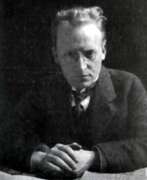

Richard Riemerschmid was a German architect, painter, designer and city planner from Munich. He was a major figure in Jugendstil, the German form of Art Nouveau, and a founder of architecture in the style. A founder member of both the Vereinigte Werkstätte für Kunst im Handwerk (United Workshops for Art in Handcrafts) and the Deutscher Werkbund and the director of art and design institutions in Munich and Cologne, he prized craftsmanship but also pioneered machine production of artistically designed objects.
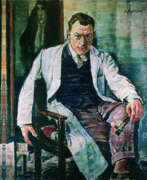

Nikolaus Sagrekow (Russian: Николай Александрович Загреков) was a Russian and German artist of the twentieth century. He is known as a painter, a representative of the "new materiality" movement, and also as an architect.
Nikolaus Sagrekow moved to Germany with his German wife in 1921 and remained there for the rest of his life. He taught portrait painting and nudes. In the late 1920s and early 1930s, the artist reached the peak of his creativity. He participated in many exhibitions in Berlin, Munich, Paris and Vienna. In 1952, the master received German citizenship and became deputy chairman of the Union of Berlin Artists. From the mid-1930s he began to engage in architectural work, and in 1960-1970 he created many paintings, including portraits of German political figures.
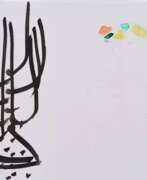

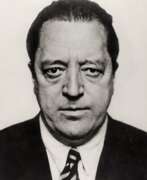

Ludwig Mies van der Rohe, born Maria Ludwig Michael Mies was a German-American architect and furniture designer. He was commonly referred to as Mies, his surname. Along with Alvar Aalto, Le Corbusier, Walter Gropius and Frank Lloyd Wright, he is regarded as one of the pioneers of modernist architecture.
In the 1930s, Mies was the last director of the Bauhaus, a ground-breaking school of modernist art, design and architecture. After Nazism's rise to power, with its strong opposition to modernism (leading to the closing of the Bauhaus itself), Mies emigrated to the United States. He accepted the position to head the architecture school at what is today the Illinois Institute of Technology in Chicago.
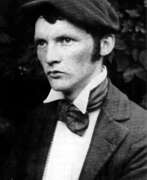

Heinrich Vogeler was a German artist and philosopher, a representative of the German Art Nouveau. A versatile and talented artist, he painted, watercolored, composed poems, designed, designed and decorated. Over time, his style of art changed over a wide range.
During World War I, from 1914 to 1917, Vogeler was on the Eastern Front as a volunteer and made sketches, which resulted in his pacifist sentiments.
In the mid-1920s he visited the Soviet Union several times and his impressions resulted in paintings in his own "complex style: "Karelia and Murmansk" (1926), "Building a New Life in the Soviet Republics of Central Asia" (1927), and "Baku" (1927). In 1931 Vogeler received an invitation to work in the USSR. The coming to power of the Nazis in Germany made it impossible for him to return home, and after Hitler's invasion Vogeler among many was deported to the Kazakh SSR, where he died.
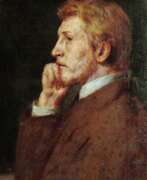

Adolf von Hildebrand was a German sculptor of the second half of the 19th and early 20th centuries, a representative of academism. He was also fond of architecture, painting, graphics and medallions.
Adolf von Hildebrand is also known as an authoritative art theorist, his fundamental work "The Problem of Form in Fine Art," first published in 1892, was subsequently translated into dozens of foreign languages.
Hildebrand spent much of his life outside Germany. In Italy he was strongly impressed by the work of the best masters of antiquity and the Renaissance. Soon, together with a group of like-minded people, he founded the "Roman circle". The members of this creative association urged their colleagues to abandon decadent attitudes in favor of the true values of ancient art.
In recognition of his achievements, the King of Bavaria knighted Hildebrand at the end of his life and the aristocratic prefix "von" was added to his name. The sculptor's works have survived in many European cities, but his most famous architectural and sculptural works are in Munich.
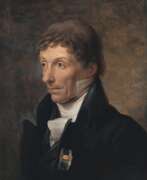

Johann Christian von Mannlich was a German painter of the late 18th and early 19th century. He is known as a painter and architect.
Von Mannlich studied painting in Paris early in his career and was influenced by the French Rococo, which affected his early works. He became court painter to Prince Christian IV of the Palatinate-Zweibrücken and then general director of construction under Prince Charles II Augustus. At the end of his life, the artist was in charge of the art gallery of King Maximilian I Joseph of Bavaria. He also participated as lead architect in the construction of Karlsberg Castle.
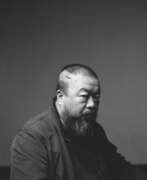

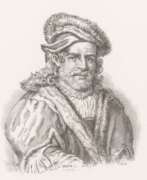

Lambert Zutman, also known under the name Lambertus Suavius, was a multifaceted artist from the Southern Netherlands. He is recognized not only for his work as a fine art painter but also for his skills as an architect, copperplate engraver, and draughtsman. His diverse career took him across Europe, with significant periods in Rome and Frankfurt am Main, where he developed his craft under the influence of Lambert Lombard.
Lambert Zutman is known for his contributions to the arts across multiple mediums, including his engravings and architectural designs. His works, such as the series depicting Christ and the Twelve Apostles, showcase his mastery in engraving and his capacity to imbue religious figures with a vivid sense of presence and individuality. Some of his notable engravings are part of collections in major institutions like the Metropolitan Museum of Art and the National Gallery of Art, highlighting his enduring relevance in the art world.
For collectors and experts in art and antiques, Zutman's works represent a significant part of the Renaissance art movement in the Low Countries. His contributions to cosmography and his diverse artistic output, spanning architectural sketches to detailed engravings, reflect the rich cultural and historical tapestry of his time.
For those interested in exploring more about Lambert Zutman's life and works, subscribing to updates on exhibitions and sales can provide valuable insights and opportunities to view or acquire his works. This subscription ensures that enthusiasts and collectors stay informed about key events and offerings related to Zutman's artistic legacy.
